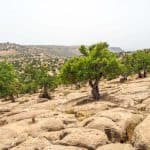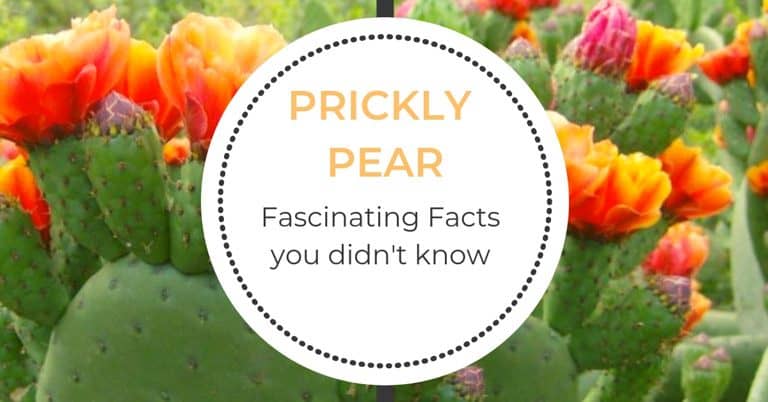


A Few years ago, we were driving down a mountain road when we saw prickly pear cactus on the roadside. It was a hot August day. So, we decided to stop and enjoy some refreshing free fruit.
It turned out, using only a Swiss Army knife to pick and eat these fruits was a terrible idea. Somehow, loads of spines (or glochids as I learned after) got stuck in our fingers, hands and even invaded the car. It all happened before you could wikihow things.
What I discovered later about this irritating plant was even more fascinating. Here are some facts you probably didn’t know about Barbary Figs cactus in Morocco:
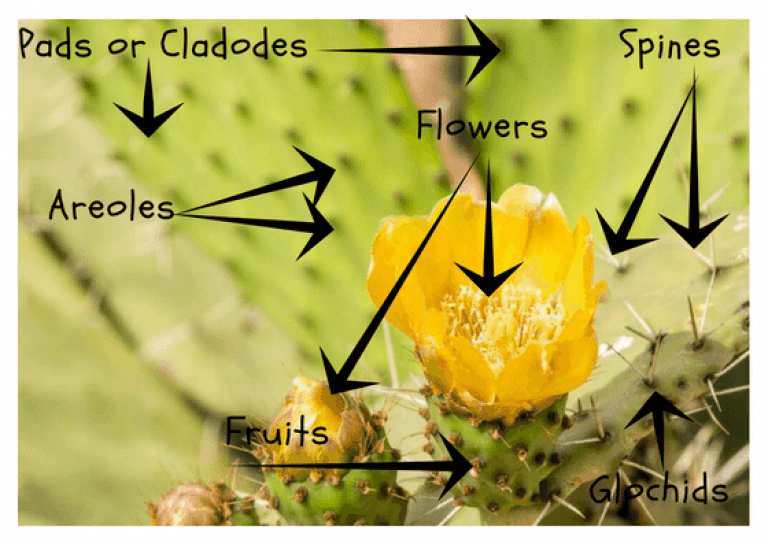
Prickly pear or Opuntia Ficus Indica has several names. it is also called tuna, sabra, nopal, barbary fig, indian fig, christian fig….etc.
Yummy-tummy fig and giggly figgily, are two names invented by my respectful friend. They do not actually exist, but I decided to add them because they seem amusingly suitable for such an exotic plant and a succulent fruit.
Barbary Figs: Fascinating facts you probably didn’t know
1. Prickly Pear Cactus produces the most expensive oil in the world!
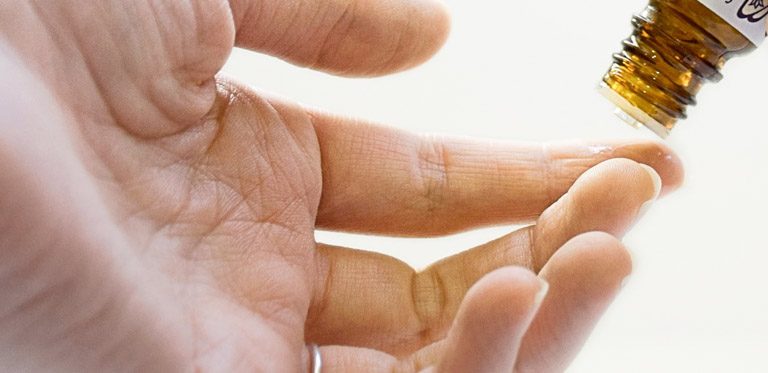
Prickly pear seed oil costs around 1 000 € per kg, and before you freak out, know that it takes one ton of figs to produce around one kilo of this precious oil.
Yet, this beauty product can still be found online at cheap prices. That is why it is important to distinguish between three oils:
I. Oil made of cladodes: The pads which hold fruits and flowers are called cladodes. The oil made from these contains lower essential fatty acids than the oil extracted from seeds, and therefore is cheaper.
II. Macerated Oil: It is also called infused oil where flower heads are infused in another oil for a certain amount of time. This oil is the cheapest.
III. Oil extracted from the seeds: The seeds are separated from ripe fruits and then cold-Pressed. This high quality oil is sold at incredibly high prices.
The oil of the barbary fig contains a high level of linoleic acid, and decent levels of other essential fatty acids. It might even be a serious competitor to the famous Argan oil since it contains 150% more vitamin E, in addition to vitamin K and beta-carotene. Vitamin E is an important element in the production of anti-aging creams.
2. Everything about Prickly Pear cactus is edible… or almost!
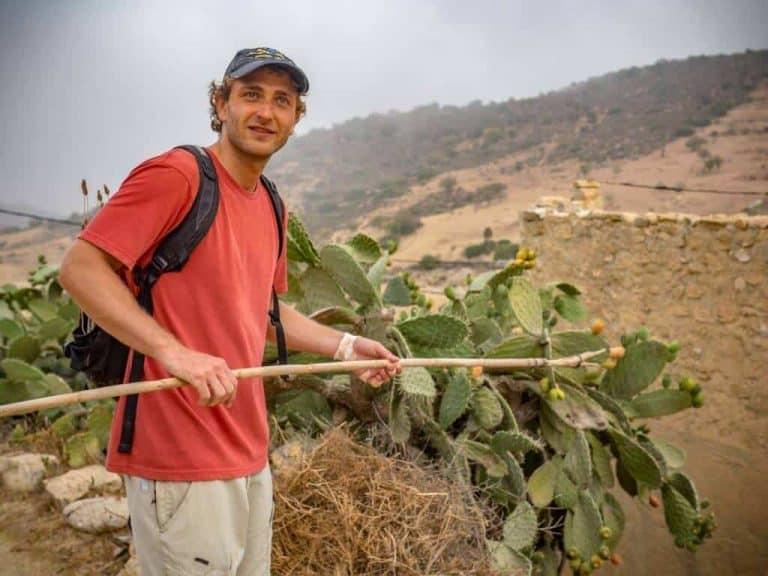
During summer in Morocco, street vendors sell prickly pear everywhere. The fruits are cheap and refreshing.
But Nopales (cactus’ pads) can also be eaten. Raw or cooked, they are very nutritious, but this is more common in Mexican restaurants.
The pads can also be dried and turned into powder. Ten kilos of fresh Nopales produce one kilo of a natural appetite suppressant.
Seeds are dried to make a nutrient-rich flour, and that is not all; flowers are also dried and can be used in infusions to relieve gastrointestinal pain in Berber tradition.
Obviously, you cannot eat the roots or the spines!
Prickly pear contains fiber, vitamin C, calcium, and antioxidant compounds. It can improve health, and according to several studies, it may also help lower the risk of several serious health issues such as Hyperglycemia, diabetes, gastritis, hypercholesterolemia and obesity.
3.Prickly Pear Cactus could be our climate saviour
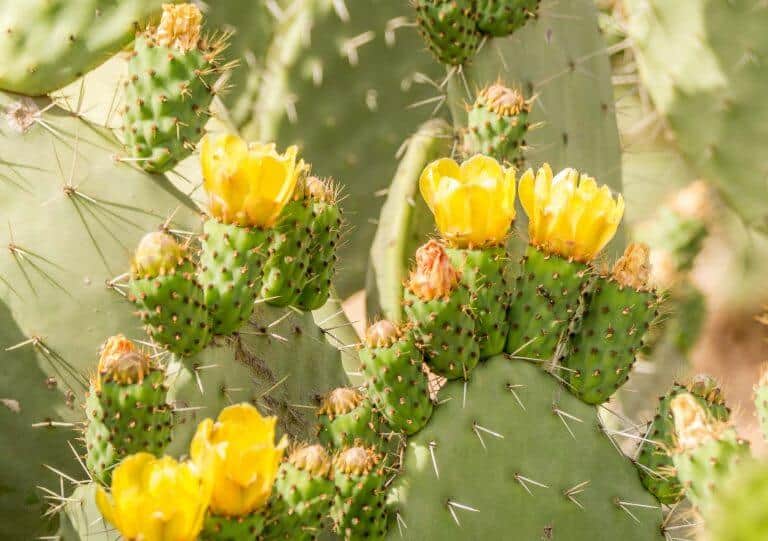
4. In Morocco, Prickly Pear Cactus gives women wings
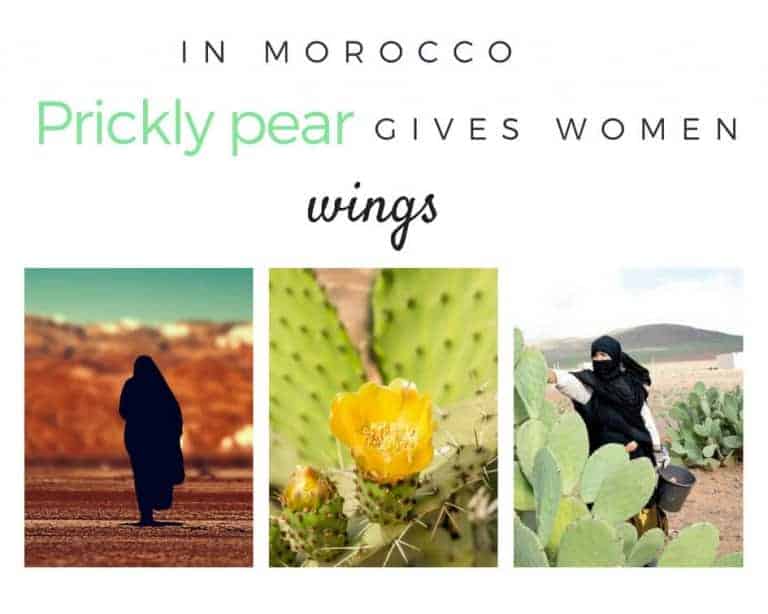
5. Even the bugs that live on the prickly Pear Cactus are precious!
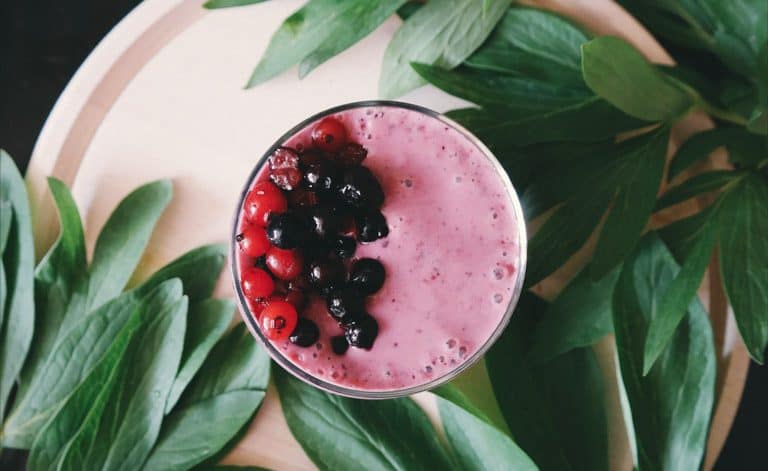
The cochineal is a tiny white insect that sucks the sap out of cactus and kills the plant. It is not welcomed in Morocco.
But a coin has two sides, and the cochineal is not only an invasive pest. When dried and crushed, this white insect produces a beautiful red dye (carminic acid).
Traditionally, it was used for colouring fabrics. Now it is used in cosmetics dye and as a natural food colouring (E120), oil paints, pigments and watercolours…
To produce dye, female cochineal insects are collected when they are around ninety days old. They are immersed in hot water, then dried. The colouring comes from carminic acid. Today, Peru is the biggest producer of the cochineal dye worldwide.
6. Prickly Pear Cactus is neither Moroccan nor African
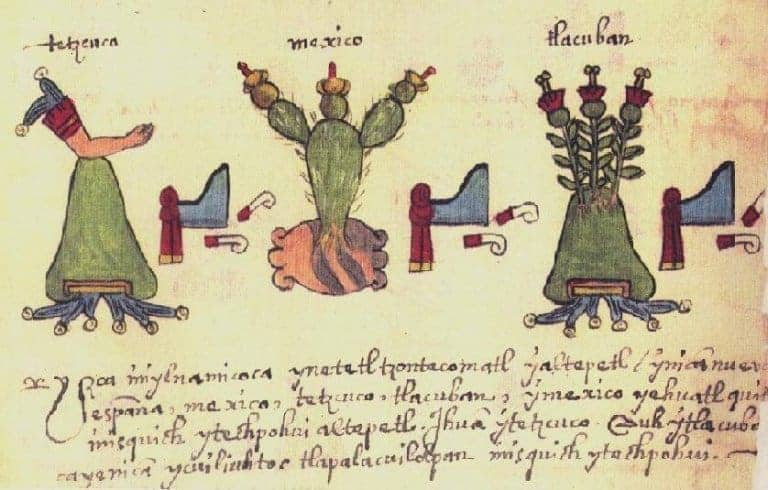
The origin of Taknarit is somewhat vague. It is believed that it was spread from Central and South America to Europe and then to the rest of the world.
This may be no more than an anecdote, but at the time of Spanish conquests, Europeans were introduced to prickly pear fruits by natives. When they saw the red colour of their urine, they thought they had been poisoned and were bleeding to death.
Prickly pear was brought to Morocco around the end of the 16th century by the Spaniards. It was introduced via Canary Islands, and is hence still called “Aknari” in the region of sidi ifni, which is home to over 50% of Morocco’s prickly pear cactuses.
“Hindia” (the indien) and “Karmos nsara” (Christian fig) are other names used in Morocco.
7. And by the way…the famous Moroccan “cactus honey” has nothing to do with cactus (or the prickly pear)
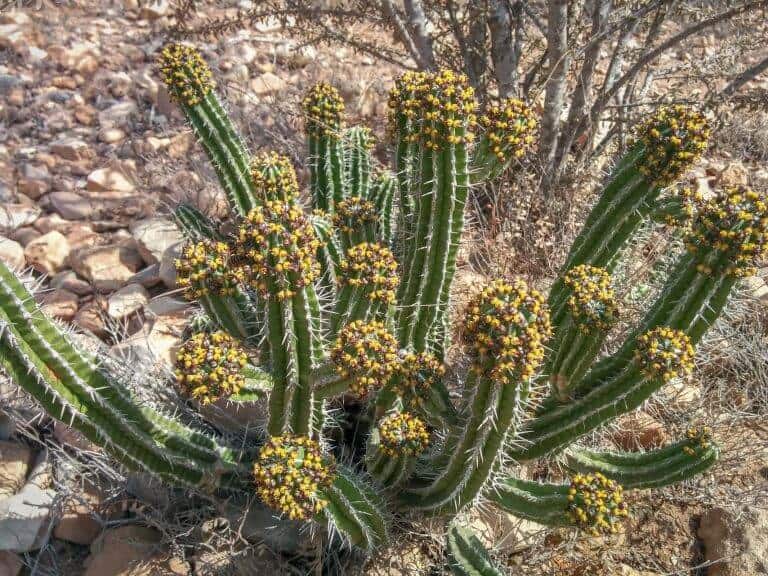
The most popular honey in Morocco, after the one made from thyme, is mistakenly called “cactus honey” or locally known as Daghmouss. It is mostly purchased for its medicinal properties, such as soothing a sore throat and treating allergies or even the flu. Some research even suggests that Daghmouss may help prevent heart disease.
Though everybody calls it cactus honey, this later is actually made from euphorbia (Euphorbiaceae), an entirely different plant (photo above).
During our hikes, people frequently confuse Euphorbia plants for Cactus because both are very similar in appearance, and both can survive in highly arid conditions.
Yet, there are few ways to tell the difference between both. If you pay attention, you will notice that spines, stems and flowers are different. Slow hikes allow us to pay attention to small details.
Ref :
Bellakhdar, Jamal. (2008). Hommes et Plantes au Maghreb : éléments pour une méthode en ethnobotanique, Casablanca, Morocco : Editions Le Fennec.
Bellakhdar, Jamal. (2018). Le Maghreb à travers ses plantes Casablanca, Morocco : Editions Le Fennec.
Crop ecology, cultivation and uses of cactus pear, Food and Agriculture Organization of the United Nations.

By Mbarka
-You may also like –

